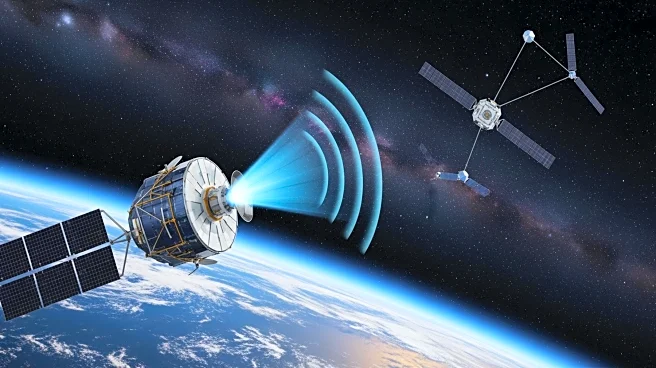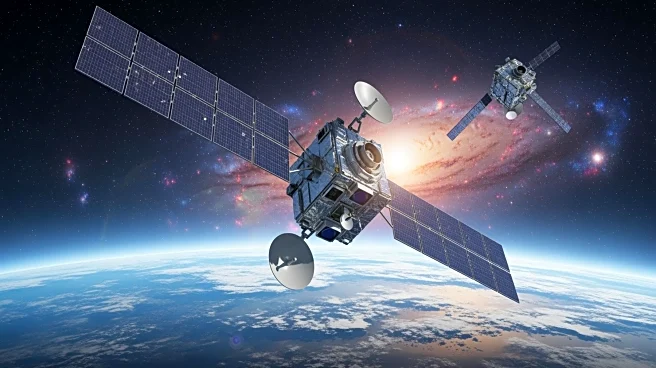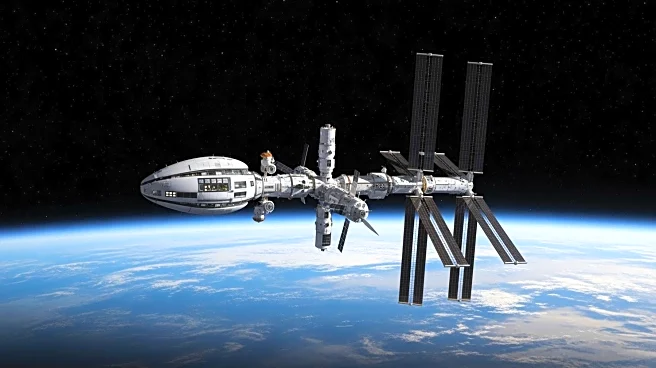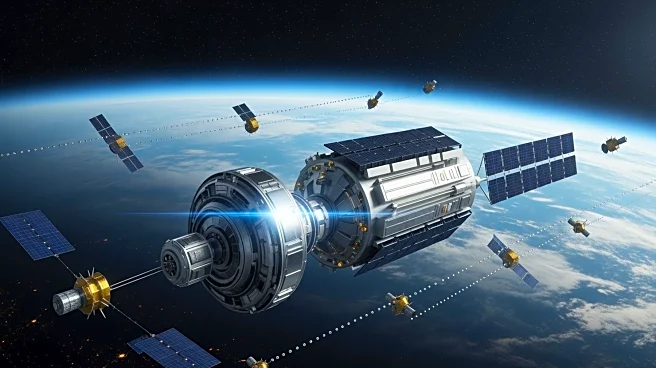What's Happening?
Gravitics has introduced its new orbital carrier, Diamondback, designed to bolster U.S. national security in space. The announcement was made at Payload’s Space Investor Summit. The Diamondback carrier is engineered to deploy space-based missile interceptors
and protect U.S. satellites. Gravitics CEO Colin Doughan likened the carrier's function to a police station, where assets can be staged and quickly deployed when needed. The spacecraft is designed to protect its housed assets from environmental threats such as thermal fluctuations and radiation, ensuring readiness for rapid deployment. Gravitics was awarded a Space Force STRATFI contract worth up to $60 million to develop this technology for the Defense Department.
Why It's Important?
The introduction of Diamondback is significant for U.S. space defense capabilities, providing a rapid response mechanism to potential threats against military satellites. This technology enhances the ability to deter adversarial actions in space without creating debris, using non-kinetic methods like jammers or dazzlers. The carrier's ability to reach various orbits quickly ensures comprehensive coverage and protection of national security assets. This development represents a strategic advancement in space defense, potentially influencing U.S. military operations and international space security dynamics.
What's Next?
Gravitics plans to continue developing the Diamondback under the Space Force contract, with potential expansions in its capabilities. The carrier could be stationed throughout low Earth orbit (LEO) and geostationary orbit (GEO), providing global coverage. The technology may also find applications in civil operations, such as emergency rescue missions or astronaut supply deliveries. Stakeholders, including the U.S. government and defense agencies, are likely to monitor the deployment and operational effectiveness of Diamondback closely.
Beyond the Headlines
The Diamondback carrier could influence the broader space industry by setting new standards for rapid response and asset protection in orbit. Its dual-use potential for both defense and civil applications highlights the evolving nature of space technology, where military innovations can have civilian benefits. This development may also prompt discussions on the ethical implications of space-based defense systems and their impact on international space treaties.













